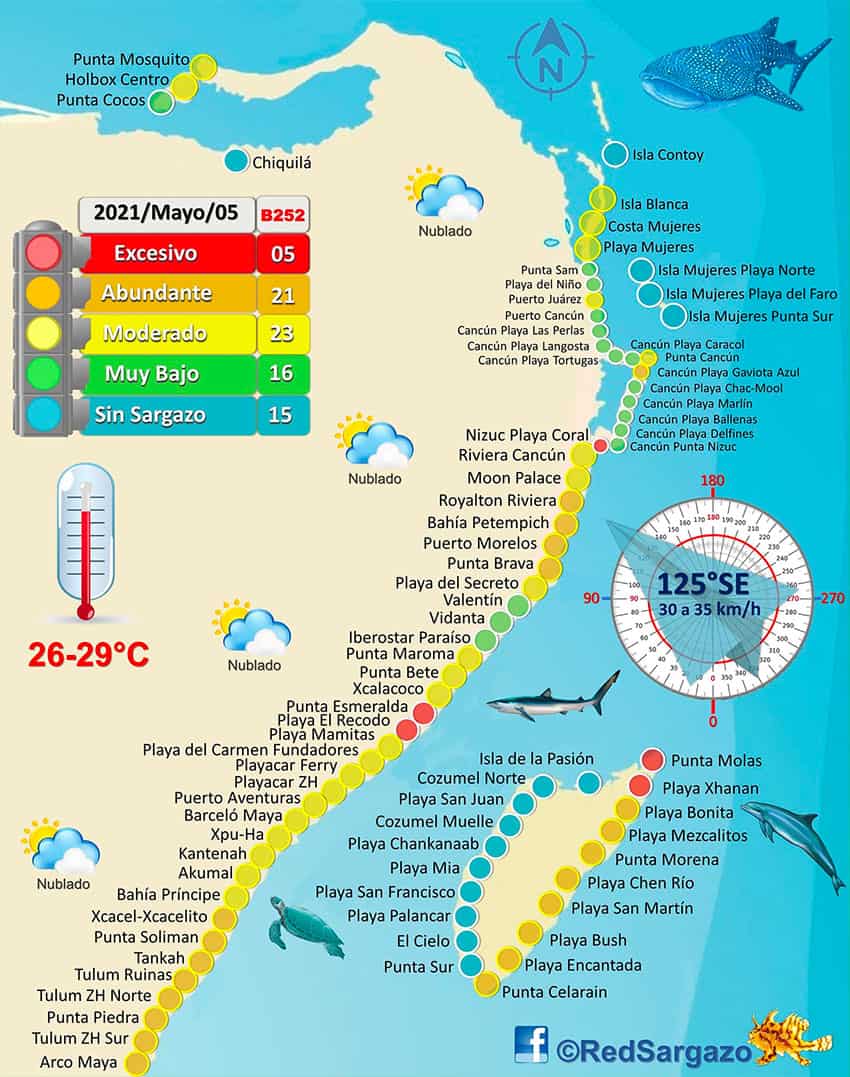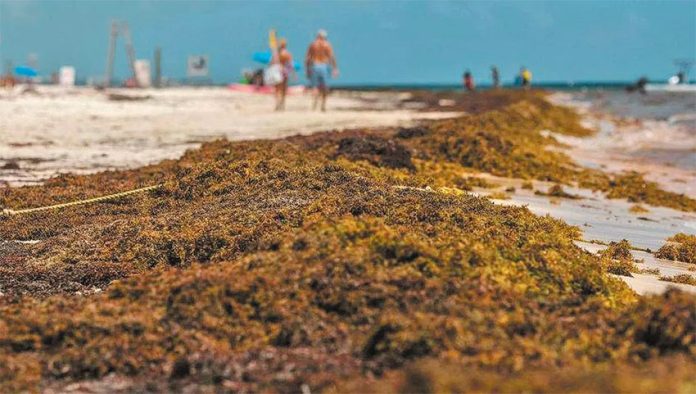A Quintana Roo hotelier claims that the federal government has no strategy to stop the arrival of sargassum on beaches in the Caribbean coast state although the navy has been deployed to do exactly that.
“The supposed strategy of the Ministry of the Navy in the state is non-existent,” said Alejandro Zozaya, CEO of Apple Leisure Group, which has several properties in Quintana Roo.
“What strategy? The sargassum is already arriving, it’s already here and we don’t see a strategy,” he said.
Zozaya said the only effective way to stop sargassum from washing up on beaches is to collect it while it is still at sea.
“But we don’t see any federal government action in that regard,” he said, although navy vessels have been deployed to remove masses of sargassum from the sea and install barriers to stop it from reaching the coast.
Zozaya said it has been left up to hotels to remove the unsightly seaweed from Quintana Roo’s beaches themselves.
This sargassum season, which normally runs from March to September, is expected to be similar to that of 2018, when massive amounts of the weed arrived on the coastline.
The problem could be exacerbated by sargassum containment barriers not working as they should. Members of the Quintana Roo government’s sargassum committee said earlier this week that barriers installed by both hotels and the navy are not preventing large amounts of the weed from reaching beaches.
“The navy installed barriers … [but] sargassum continues arriving on the beach,” said a committee member who spoke to the newspaper Reforma on the condition of anonymity. “ … I feel that the necessary care [in installing the barriers] wasn’t taken.”
The committee member also said the federal government isn’t using its sargassum containment tools effectively.
“So that the work is effective … you have to have the sargassum-gathering vessels and barriers working together,” he said.

In contrast to Zosaya’s claim, another committee member said the navy is collecting sargassum in the sea off the coast of Mahahual, Xcalak, Tulum, Playa del Carmen, Puerto Morelos and Cancún.
Speaking at a press conference on Tuesday, the head of the navy reported that marines are working in Quintana Roo to combat the arrival of sargassum. Admiral José Rafael Ojeda said 289 marines and numerous vessels, including 12 that gather sargassum, have been deployed to protect beaches from Isla Mujeres in the north to Othón P. Blanco in the south.
Despite the navy’s efforts, sargassum continues to accumulate on beaches, where it quickly begins to emit foul odors as it rots under the sun.
According to the Cancún sargassum monitoring network, which published an updated map on Wednesday, there are currently excessive amounts of sargassum on five beaches – three on the mainland and two on the northeastern tip of Cozumel, an island off the coast of Playa del Carmen. There are 21 beaches with abundant quantities of sargassum, 23 with moderate amounts, 16 with very low quantities and 15 that are free of the seaweed, which in addition to being smelly and unattractive can cause environmental problems.
The presence of sargassum hasn’t stopped tourists from using them, according to a report published Wednesday by the news website Reporte Indigo. It said visitors are taking advantage of “small islands of sand” on beaches to sunbathe, do yoga or simply sit down and enjoy a drink.
In Playa del Carmen, where there are currently moderate amounts of seaweed on beaches, a municipal worker told Reporte Indigo that strong waves had broken sargassum barriers and rendered them ineffective. To date, however, less sargassum than last year has arrived, he said.
The worker said he manages a municipal government team of almost 40 men that is working to clean beaches in the municipality of Solidaridad but they lack machinery to assist them.
Manually shoveling sargassum is arduous and often frustrating work but to keep Quintana Roo’s renowned white sand beaches and turquoise blue water as clean as possible – and thus not deter tourism – the work must go on.
The immensity of the task is difficult to overstate: the navy alone has collected almost 105,000 tonnes of sargassum on beaches since 2019 as well as thousands of tonnes at sea, while removal brigades employed by hotels, municipal workers and others have cleared countless more tonnes of the pesky weed.
Source: El Economista (sp), Reforma (sp), Reporte Indigo (sp)
